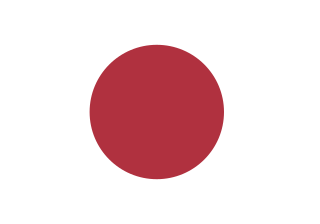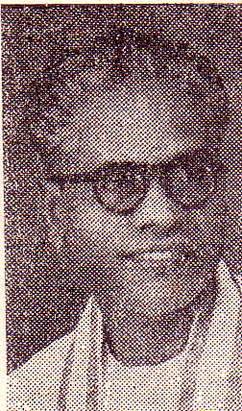After the outbreak of the Second World War, in the British Crown Colony of Ceylon, the government of Sir Don Baron Jayatilaka assured the British King and his government of its continued support.

Malaya, then under British administration, was gradually occupied by Japanese forces between 8 December 1941 and the Allied surrender at Singapore on 15 February 1942. The Japanese remained in occupation until their surrender to the Allies in 1945. The first Japanese garrison in Malaya to lay down their arms was in Penang on 2 September 1945 aboard HMS Nelson.
Pakiasothy Saravanamuttu StadiumColombo Oval or P. Sara or simply PSS is a multi-purpose stadium in Colombo, Sri Lanka. It is currently used mostly for cricket matches. The stadium holds 15,000 and hosted its first Test match in 1982. It is named after Paikiasothy Saravanamuttu, a former civil servant and first President of the Board of Control for Cricket. The venue is the home ground of the Tamil Union Cricket and Athletic Club. The P.Sara Oval hosts one Test match per year in Sri Lanka's summer Test calendar, but lost out to Pallekele International Cricket Stadium in 2011 to host Sri Lanka v Australia Tests.
Cricket was introduced to Sri Lanka in the first quarter of the 19th century, following colonisation of the island by the British. The earliest known match was recorded in 1832 and the earliest first-class one in 1926. The national team has played Test cricket from 1982. The national team has achieved international success by winning the 1996 Cricket World Cup and the 2014 ICC World Twenty20. Cricket is played nationwide with Test venues in Colombo, Galle, Kandy and Moratuwa. The country's most notable players include Aravinda de Silva, Arjuna Ranatunga, Rangana Herath, Sanath Jayasuriya, Mahela Jayawardene, Muttiah Muralitharan, Kumar Sangakkara and Chaminda Vaas. Administration and governance are performed by Sri Lanka Cricket, which was founded in July 1922 as the Ceylon Cricket Association (CCA). The main domestic competition is the Premier Trophy which attained first-class status in 1988.

Tamil Union Cricket & Athletic Club is a first-class cricket team based in Colombo, Sri Lanka. They play their home games at P. Saravanamuttu Stadium.

Borella is the largest suburb in Colombo, Sri Lanka represented by divisional code 8.

Kaarthigesar Ponnambalam Ratnam was a Sri Lankan Tamil academic, politician and Member of Parliament.

Sir Hilarion Marcus Fernando, FRCP was a pre-independence Ceylonese statesman, physician and banker. He was a member of both the executive council and legislative council, as well as the chairman of the State Mortgage Bank of Ceylon.

Sir Ratnasothy Saravanamuttu was a Ceylon Tamil physician, politician and the first Mayor of Colombo.

Paikiasothy Saravanamuttu was a Ceylonese civil servant and sports administrator.
Lieutenant Colonel Sabdharatnajyoti "Thambirajah" Saravanamuttu, MBE was a Ceylon Tamil lawyer, politician, military officer, cricketer and sports administrator.
Luisa, Lady Naysum Saravanamuttu was a Ceylonese politician. She was the second female member of State Council of Ceylon and the second elected female legislator in Sri Lanka.
Senator Edward Wilmot Kannangara, (1894-19??) was a Ceylonese civil servant and statesman. He served as the Permanent Secretary to the Ministry of Health and Local Government and a member of the Senate of Ceylon.

Edward Frederick Noel Gratiaen, was a Ceylonese lawyer and judge. He was a former Attorney General of Ceylon and puisne judge of the Supreme Court of Ceylon.
The Ceylon Morning Leader was an English language daily newspaper in Ceylon. In 1907 the De Soysa family bought the proprietary rights of the defunct Ceylon Standard and started publishing the Ceylon Morning Leader. Ownership of the newspaper later passed to a syndicate comprising W. A. de Silva, C. E. A. Dias, Charles Peiris and James Peiris. De Silva later became the sole owner.

The Penang and Province Wellesley Volunteer Corps, also known as Penang Volunteer Corps and Penang Volunteer Rifle was a militia unit in Malaya. It was established on 1 March 1861 and together with Singapore Volunteer Corps and Malacca Volunteer Corps, they were a part of the Crown Colony of the Straits Settlements Volunteer Force (SSVF). The Penang Volunteer Rifle was the 3rd Battalion SSVF while Singapore is 1st and 2nd Battalion SSVF and Malacca was the 4th Battalion SSVF. After the expulsion of Singapore from Malaysia in 1965, the Penang Volunteer Rifle became the oldest military unit established in Malaysia.
Saravanamuttu is a surname. Notable people with the surname include:

The Tuanku Syed Putra Building is an office building in George Town within the Malaysian state of Penang. Completed in 1962, the building, situated at Downing Street within the city's Central Business District (CBD), is owned by the Malaysian federal government and accommodates the Penang General Post Office (GPO). It once served as the seat of the Penang state government and, until 1966, was the tallest building in George Town.









